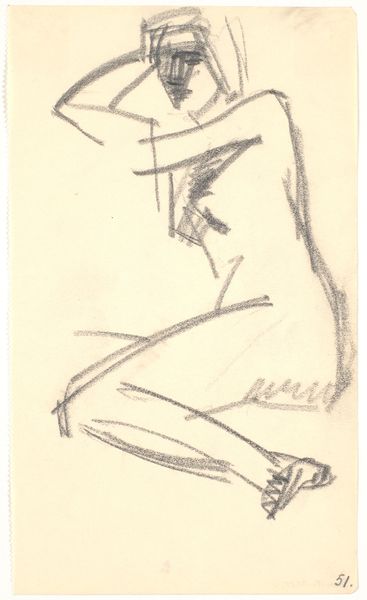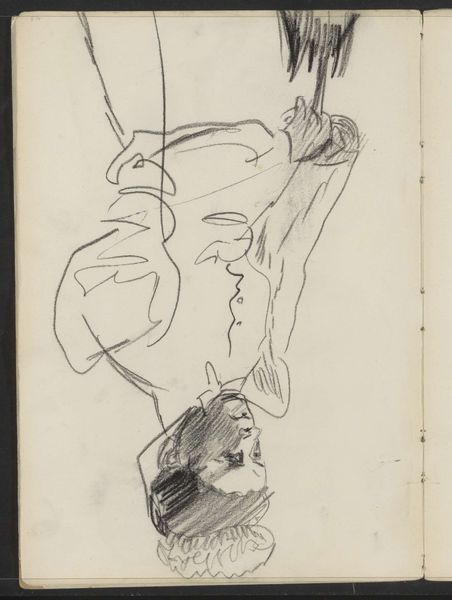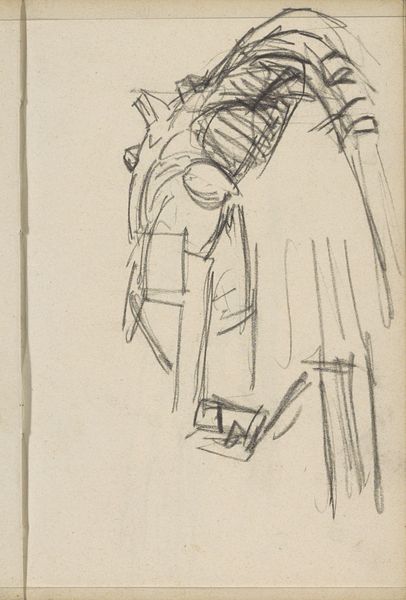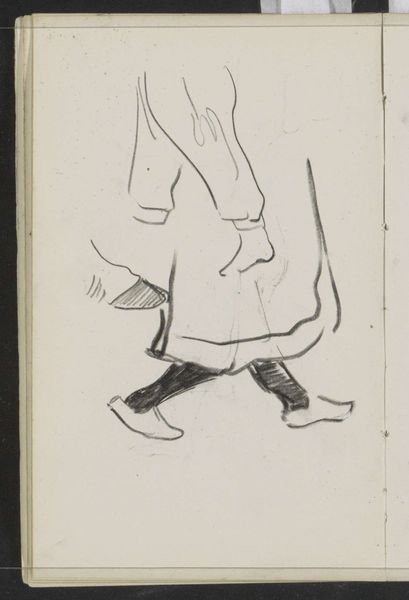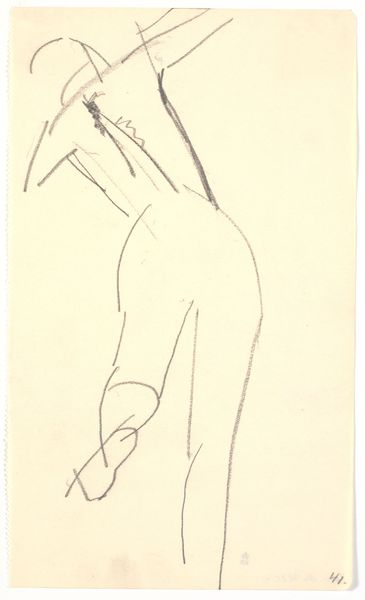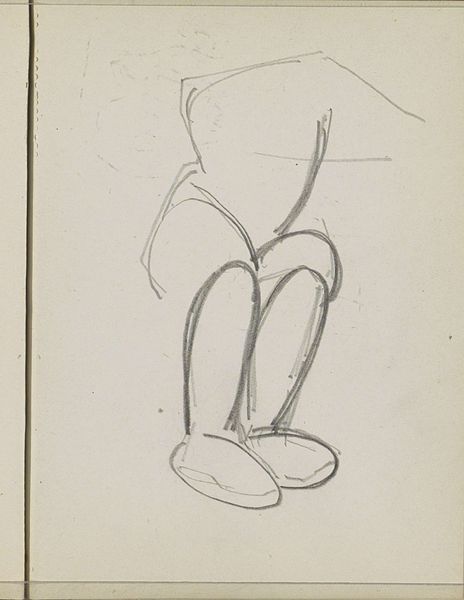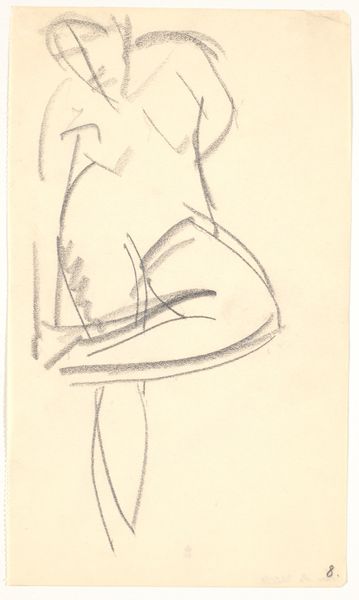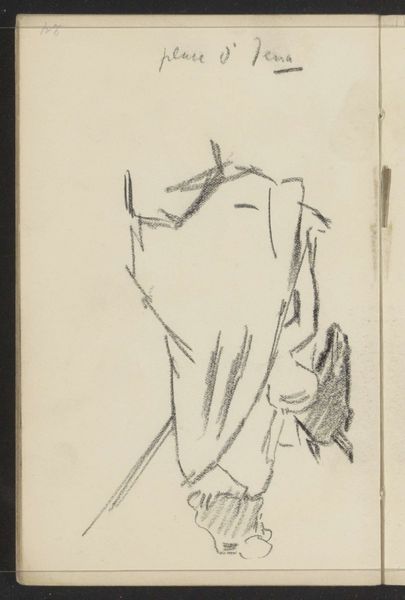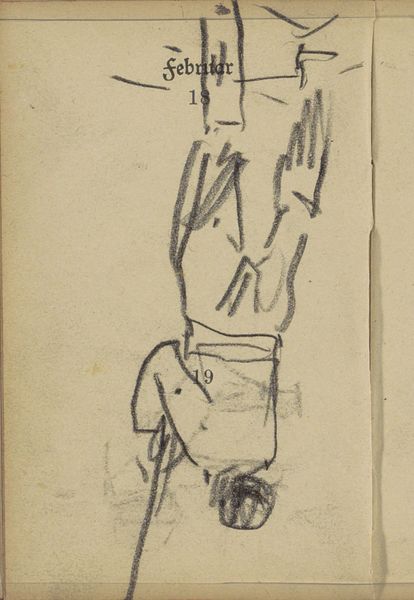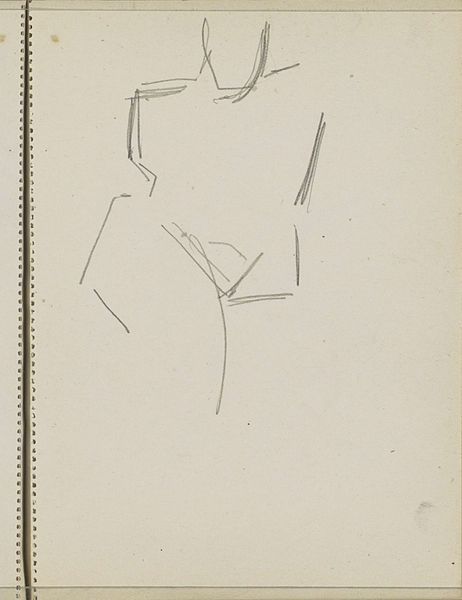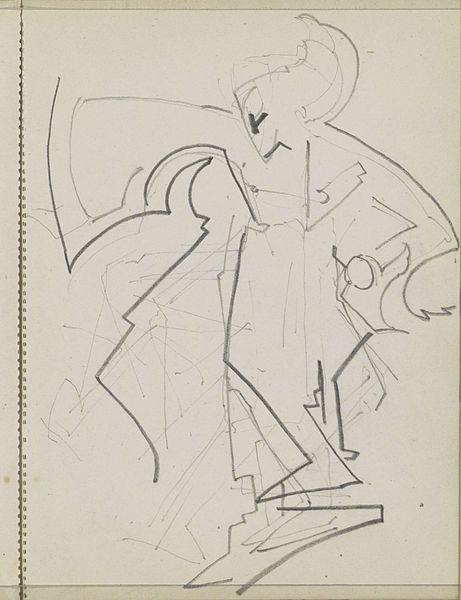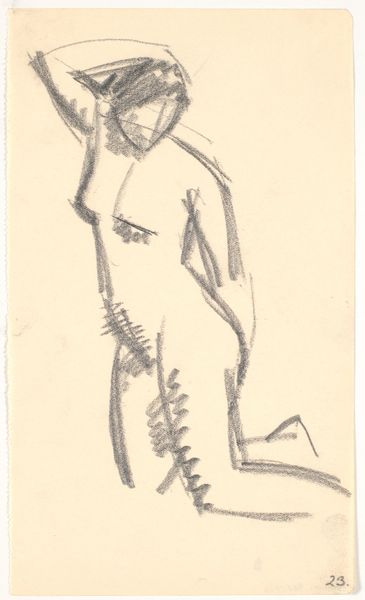
drawing, pencil
#
portrait
#
drawing
#
amateur sketch
#
light pencil work
#
pencil sketch
#
incomplete sketchy
#
figuration
#
personal sketchbook
#
idea generation sketch
#
geometric
#
pen-ink sketch
#
pencil
#
sketchbook drawing
#
sketchbook art
#
initial sketch
Copyright: Rijks Museum: Open Domain
Curator: This drawing, aptly titled "Standing Figure with Bent Knees and Raised Arms," presents us with a figure captured in pencil some time between 1906 and 1945. Editor: Immediately, I'm struck by the angularity. The figure seems composed of sharp edges and planes rather than curves. It's almost Cubist, yet it feels rawer, more tentative. Curator: Indeed. The rawness lends itself to reading this work through the lens of vulnerability. The raised arms, coupled with the bent knees, can be interpreted as a gesture of supplication or even surrender. Considering the period in which it was created, one could consider these symbols representing a response to oppressive political or social climates. Editor: Or perhaps the raised arms are a signal? An attempt at communication? The stark geometric shapes evoke early religious icons, think of the simplified figures found in some Byzantine mosaics, although those often communicate power or veneration, not supplication. The very spare use of pencil work may emphasize an appeal for a simplified view on life... Curator: That's fascinating. It reframes the figure not as defeated but as seeking a more elevated position. But consider: even religious iconography served sociopolitical purposes. Could this geometric simplicity be a critique of established societal structures masked as pious longing? Editor: I see what you're saying. The ambiguity is potent, isn't it? It allows for readings rooted both in personal struggle and broader social commentary. What strikes me is the lack of identifying features. It speaks to universality of a human condition... The lack of detail allows anyone to project themselves on that "standing figure", making it more approachable. Curator: Absolutely. By stripping away individuality, the artist creates a vessel through which collective experiences can be processed and, perhaps, challenged. Thank you for offering me another avenue of contextualizing the figure into one of inclusion for different backgrounds, beliefs and social groups! Editor: The drawing invites, even demands, that we confront our own interpretations, doesn’t it? And it prompts us to reflect on shared imagery to establish connections across time and different populations.
Comments
No comments
Be the first to comment and join the conversation on the ultimate creative platform.

